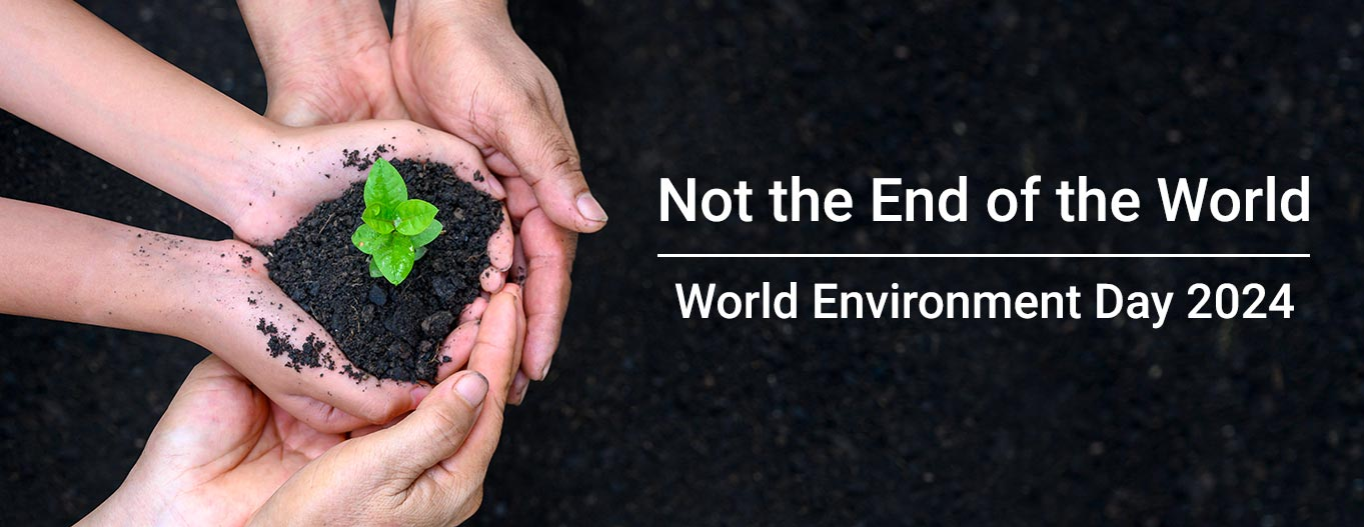
This article is a part of the essay series: Not the End of the World: World Environment Day 2024
The rapidly evolving climate crisis evident from frequent extreme weather events has put the democratic system on trial. Many analysts feel the democratic system (with popular sovereignty; accountability and responsiveness of elected officials; dilatory policy process and short-termism) is unsuitable to arrest the perilous effects of climate change and that authoritarian regimes are better suited to address the risks of climate change rapidly and also to mitigate its disruptive impacts. While there is some truth, the argument in support of authoritarian regimes and their effectiveness is at best flawed. This is evident in recent examples, where authoritarian regimes were dealing with emergencies like the pandemic. A case in point is China’s handling of the COVID-19 pandemic. China’s persistent struggle (despite initial successes in controlling infections) in dealing with the COVID-19 pandemic (Zero COVID) is a clear example of why an authoritarian system with all its strengths to take swift actions often fails. In comparison, large, open and diverse federal democracies like the United States (US) and India, notwithstanding initial setbacks, managed the global pandemic much more effectively than China and other authoritarian regimes did. In this context, this piece argues for strengthening federal mechanisms and decentralised responses to climate change which poses the gravest threats to the Indian state and society at large. It argues that the climate battle in India has to be fought on the foundation of federalism (centre-state multilevel collaboration).
Climate change and India’s top-heavy federal structure
Issues like environment and climate change are generally tackled on multiple levels and by collaborative frames involving multitudes of institutions and processes in India. The constitutional division of power (under the Seventh Schedule) gives the federal government power over important areas (concerning environment and climate change) such as atomic energy and mineral resources, oil and petroleum products and core aspects of mines and minerals. Under the concurrent domain, forests, and electricity issues are jointly manned by both the states and the centre (although the federal government has the final say). The states are divested with powers over agriculture, water, land, some aspects of mines and minerals, gas and local government. However, India’s quasi or top-heavy federal setup provides many sweeping powers to the federal government contrary to classical federal systems such as the US, Canada, and Germany. The federal government enjoys disproportionate financial powers and institutional capabilities compared to the states and retains the agenda-setting power on many realms of climate policy including those jurisdictions that are the sole prerogative of the states (such as water and agriculture).
Issues like environment and climate change are generally tackled on multiple levels and by collaborative frames involving multitudes of institutions and processes in India.
To illustrate this by examples, the federal government largely focuses on bringing national policies, enacting national legislation, and steering international conventions, dialogues, and treaties related to climate change. India’s national efforts on climate change are steered by the Ministry of Environment, Forest and Climate Change (MEFCC). As a nodal body, the Ministry coordinates the national response at diverse levels including getting key bodies such as the Central and State Pollution Boards and other statutory bodies on the environment/climate change to perform specified functions. In terms of a visible national strategy to tackle climate change, the federal government under Prime Minister Manmohan Singh created a key body named the Prime Minister’s Council on Climate Change (PMCCC) in 2007 with the intention of galvanising the country-wide efforts. Year after, the central government launched the National Action Plan on Climate Change (NAPCC) which unveiled eight national missions (such as solar mission, water mission, etc.) under its rubric.
After assuming power in 2014, Prime Minister Narendra Modi helped create multiple macro-level institutions and initiatives to accelerate the climate response. Under his leadership, the Pradhan Mantri Kisan Urja Suraksha Evam Utthaan Mahabhiyan (PM-KUSUM) was brought in. The Modi government instated a new institution, the Apex Committee for the Implementation of the Paris Agreement (AIPA), in 2020 to consolidate knowledge and technical expertise from the business sector, research bodies, think tanks, and civil society. With PM Modi taking a personal interest in championing flagship initiatives on climate change, the PMO has emerged as the epicentre of India’s national response to climate issues. Additionally, there are apex bodies like NITI Aayog and the National Green Tribunal (NGT) to shape policies and bring regulations on climate-related issues.
After assuming power in 2014, Prime Minister Narendra Modi helped create multiple macro-level institutions and initiatives to accelerate the climate response.
Sub-national level initiatives
While the federal government has been shaping and steering national-level policies and actions, the real action in terms of implementation lies at the sub-national levels. In particular, the state governments have been vested with critical responsibilities (as mentioned above) to build capacities; and assign/devolve responsibilities (particularly cities/ municipal bodies) to numerous institutions to fight the challenges of climate change. Most state-level initiatives to implement India’s global commitments on net-zero GHG emissions are driven under the State Action Plan on Climate Change (SAPCCs). As per the Climate Group’s recent report, 32 state action plans have come up in recent years.
Below the sub-national level (the third tier) there are Panchayats (rural local bodies) and Urban Local Bodies (ULBs) which are seen as key implementing bodies—are increasingly being devolved with powers and responsibilities to fight climate change. For instance, the Kerala Institute of Local Administration (KILA) has released plans and strategies to fight climate change. As many as 300 panchayats in the state have joined this state-level initiative to develop climate-friendly governance responses. Whereas the Ministry of Housing and Urban Affairs (MHUA), has urged ULBs to undertake city-level initiatives and partial mitigation plans to address climate change.
Need of the hour: Intergovernmental institution
While the multi-level climate governance looks very sound and coherent on paper, in reality, these are disjointed and chaotic as clearly evident from flippant responses to current heat waves across the country. A record-breaking heat wave and associated problems like acute water shortage in many states have opened the floodgates of accusations and counter-accusations between the federal government and states.
The problem to a large extent lies in faulty institutional design. While the federal government drives most of the initiatives along with its massive financial powers in a large country, the sub-national units lack capacities and key fiscal resources despite being tasked to implement India’s international pledges/foreign policy. For instance, despite plenty of attention given to SAPCCs, most of these state plans have made little or no progress in the absence of resources and committed leadership. There is a visible lack of policy coordination between federal and state-level institutions on key aspects of the climate fight. At the third tier, while 73rd and 74th Amendment acts have opened the most critical space for decentralised response, panchayats and ULBs face daunting challenges in executing climate-friendly actions largely owing to inadequate devolution in functions and finances by many states.
The problem to a large extent lies in faulty institutional design. While the federal government drives most of the initiatives along with its massive financial powers in a large country, the sub-national units lack capacities and key fiscal resources despite being tasked to implement India’s international pledges/foreign policy.
To conclude, cooperative federalism is the need of the hour to perform a wide array of activities on decarbonisation and adaptation to fight climate change. While the federal government remains the key source of leadership, states with their varying capacities and climate vulnerabilities have to take ownership of the long fight. Given divergences and dissonances are natural in a large federal country, especially on complex issues like climate change, it is time for the Indian leadership to create a robust intergovernmental body to minimise the frictions and help shape nationally coherent policies and actions against climate change.
Niranjan Sahoo is a Senior Fellow at the Observer Research Foundation.
The views expressed above belong to the author(s). ORF research and analyses now available on Telegram! Click here to access our curated content — blogs, longforms and interviews.




 PREV
PREV



